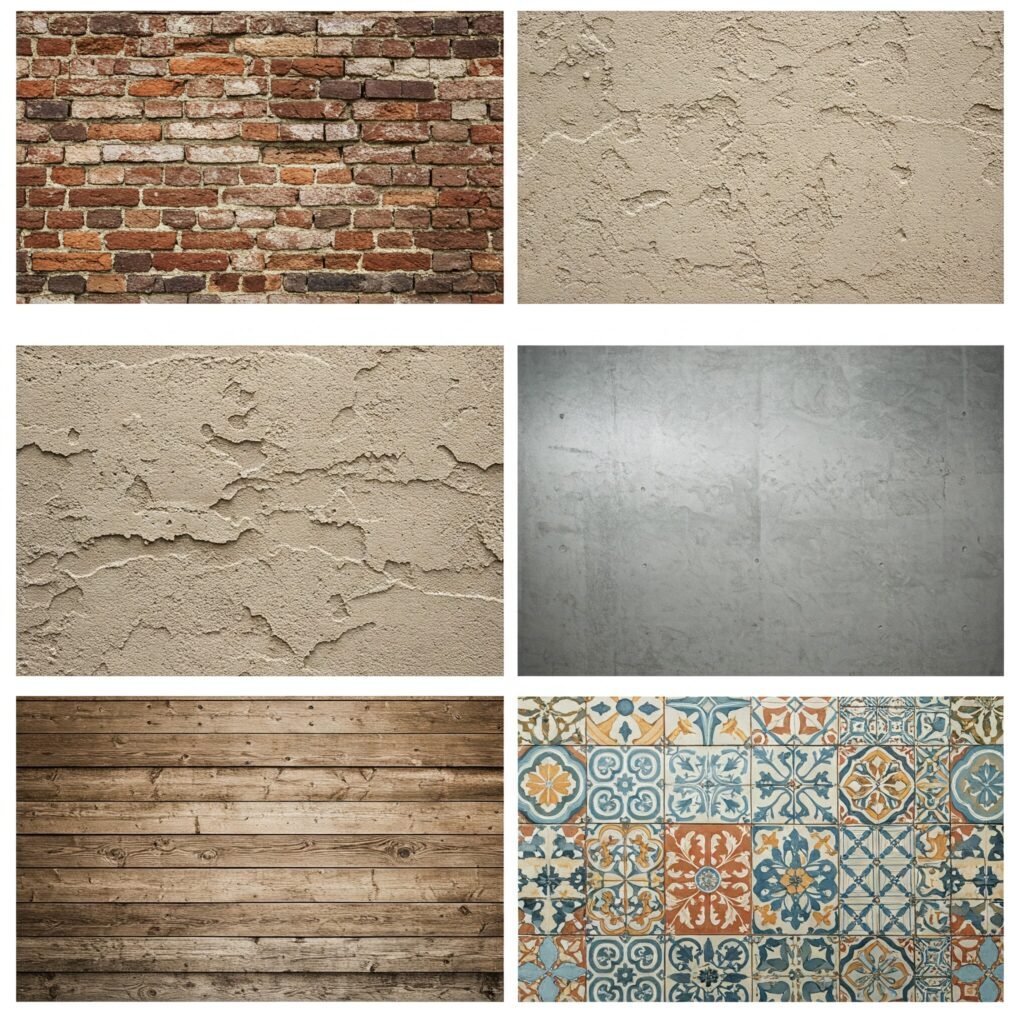How to Remove Texture from Walls is a common project for homeowners looking to update their living spaces. Textured walls, such as popcorn, orange peel, or knockdown finishes, were once popular for their ability to hide imperfections. However, over time, these textures can make a room feel outdated or become difficult to clean and maintain. If you’re ready to give your walls a fresh, modern look, this guide will walk you through seven effective methods to achieve a smooth finish. By the end, you’ll have the knowledge and confidence to tackle this project yourself or decide if hiring a professional is the better option.
Why Remove Texture from Walls?
Before diving into the process, it’s important to understand why you might want to remove texture from your walls. Textured walls were popular in the past because they hid imperfections and added visual interest. However, they can collect dust, make rooms feel smaller, and be challenging to repaint. Removing texture allows for a sleek, modern look and makes future maintenance easier. Additionally, smooth walls are easier to clean and provide a blank canvas for creative paint techniques or wallpaper.
Tools and Materials You’ll Need
To successfully remove texture from walls, you’ll need the right tools and materials. Here’s a list of essentials:
- Drop cloths or plastic sheeting: Protect your floors and furniture from debris.
- Safety goggles and a dust mask: Keep yourself safe from dust and particles.
- A ladder or step stool: Reach higher areas safely.
- A spray bottle filled with water: Soften the texture for easier removal.
- A putty knife or drywall scraper: Scrape off the texture gently.
- Sandpaper (medium and fine grit): Smooth the wall surface.
- A sanding pole or electric sander: Save time on larger areas.
- Joint compound: Fill in any imperfections.
- A drywall trowel: Apply the joint compound evenly.
- Primer and paint: Finish the wall with a fresh coat.
Having these tools on hand will make the process much smoother and more efficient.
7 Effective Methods to Remove Texture from Walls
1. Scrape the Texture Off
One of the simplest ways to remove texture is by scraping it off. Start by covering the floor with drop cloths to protect it from debris. Lightly spray the textured area with water to soften it. This step is crucial because it makes the texture easier to remove without damaging the drywall. Next, use a putty knife or drywall scraper to gently scrape off the texture. Work in small sections to avoid overwhelming yourself. Be careful not to press too hard, as this can damage the underlying drywall.
2. Sand the Texture Down
If scraping alone doesn’t work, sanding can help smooth out the surface. Begin with medium-grit sandpaper to remove the bulk of the texture. For larger areas, consider using an electric sander to save time and effort. Once the majority of the texture is gone, switch to fine-grit sandpaper for a polished finish. Sanding is a great option for walls with light textures, but it can be messy, so make sure to wear a dust mask and goggles.
3. Apply a Skim Coat
A skim coat involves applying a thin layer of joint compound over the textured wall to create a smooth surface. This method is ideal for heavily textured walls or when scraping and sanding aren’t enough. Use a drywall trowel to spread the compound evenly, working in small sections. Let the compound dry completely before sanding it down. A skim coat requires patience and precision, but the results are worth it.
4. Use a Wall Texture Remover Solution
Some hardware stores sell specialized solutions designed to soften wall texture, making it easier to scrape off. These solutions are particularly useful for stubborn textures like popcorn ceilings. Follow the manufacturer’s instructions carefully, and always test the solution on a small, inconspicuous area first. Once the texture is softened, use a putty knife to scrape it off gently. This method can save time and effort, but it may require multiple applications for heavily textured walls.
5. Cover the Texture with Drywall
For extremely stubborn textures, consider covering the wall with a new layer of drywall. This method is more labor-intensive but provides a completely smooth surface. Secure the drywall sheets to the existing wall using screws, then finish the seams with joint compound and sandpaper. While this approach requires more effort, it’s a great option for walls with significant damage or uneven textures.
6. Hire a Professional
If you’re unsure about tackling this project yourself, hiring a professional can save time and ensure a flawless result. Professionals have the tools and expertise to remove texture efficiently and repair any damage to the underlying wall. While this option may be more expensive, it’s worth considering if you’re dealing with a large area or complex textures.
7. Prime and Paint
Once the texture is removed, apply a high-quality primer to seal the wall and create a uniform surface. Primer is essential because it ensures that the paint adheres properly and looks even. After the primer dries, finish with your chosen paint color. This step not only enhances the appearance but also protects the wall from future wear and tear.

Tips for a Successful Texture Removal Project
- Work in Small Sections: Removing texture can be time-consuming, so focus on one section at a time to avoid feeling overwhelmed.
- Protect Yourself: Wear safety goggles and a dust mask to protect your eyes and lungs from debris.
- Test Methods First: Before committing to a method, test it on a small area to ensure it works for your specific texture.
- Be Patient: Rushing the process can lead to damage or an uneven finish. Take your time to achieve the best results.
Common Mistakes to Avoid
- Using Too Much Water: Over-saturating the wall can damage the drywall and make the texture harder to remove.
- Skipping Safety Gear: Always wear protective equipment to avoid injury or health issues.
- Neglecting to Prime: Skipping the primer can result in an uneven paint job and reduce the longevity of your work.
Frequently Asked Questions
Can I Remove Texture Without Damaging the Drywall?
Yes, by using gentle methods like scraping or sanding and avoiding excessive force, you can remove texture without damaging the drywall.
How Long Does It Take to Remove Texture?
The time required depends on the size of the area and the method used. On average, it can take a few hours to a full day for a single room.
Is It Cheaper to Remove Texture or Cover It with New Drywall?
Removing texture is generally more cost-effective, but covering it with new drywall may be a better option for severely damaged walls.
Conclusion
Learning how to remove texture from walls is a valuable skill that can transform the look and feel of your home. By following the methods outlined above, you can achieve a smooth, modern finish that’s easier to maintain and repaint. Whether you choose to scrape, sand, or apply a skim coat, patience and the right tools are key to success. So, roll up your sleeves and get ready to give your walls a fresh, updated look!
By incorporating these tips and techniques, you’ll be well on your way to mastering the art of texture removal. Remember, the effort you put into this project will pay off in the form of a beautiful, smooth wall surface that enhances your living space.
